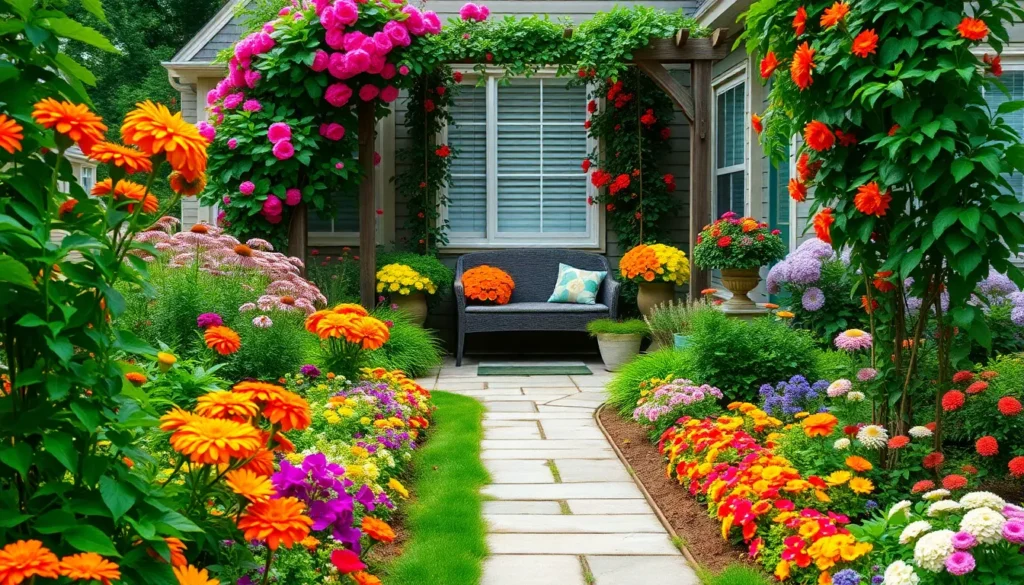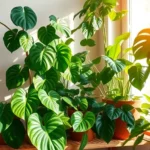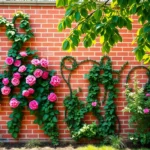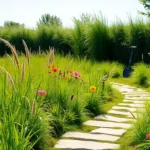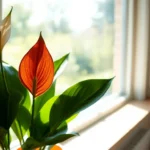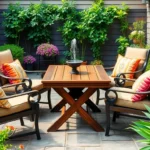Your front yard serves as the first impression visitors get of your home, and there’s no better way to create stunning curb appeal than with a thoughtfully designed flower garden. We’ve discovered that the right combination of colors, textures, and seasonal blooms can transform even the most ordinary entrance into a welcoming masterpiece that neighbors will admire year-round.
Whether you’re working with a small strip along your walkway or have expansive lawn space to redesign, creating a beautiful front yard flower garden doesn’t require a professional landscaper’s budget or expertise. We’ll share practical ideas that work for every skill level and climate zone, helping you choose plants that thrive in your exact conditions while maximizing visual impact.
From low-maintenance perennial borders to eye-catching seasonal displays, the possibilities for front yard flower gardens are endless. Let’s explore creative design concepts that’ll boost your home’s value and give you that satisfying sense of pride every time you pull into your driveway.
Create a Welcoming Entrance With Colorful Annual Displays
Annual flowers offer unmatched versatility for creating stunning front yard displays that bloom from spring through fall. We can transform our entrance with vibrant colors that change throughout the seasons.
Choose High-Impact Annuals for Continuous Blooms
Marigolds deliver bold orange and yellow blooms that last from late spring until the first frost. These hardy flowers thrive in full sun and require minimal maintenance while deterring garden pests naturally.
Petunias provide cascading waves of color in purple, pink, white, and red varieties. We’ll find these flowers perfect for borders and containers since they bloom continuously with regular deadheading.
Impatiens excel in partial shade areas where other annuals struggle to perform. Their delicate flowers in soft pastels create gentle focal points near doorways and under trees.
Zinnias attract butterflies while producing cut flowers for indoor arrangements. These sturdy plants come in heights ranging from 6 inches to 4 feet, making them ideal for layered garden designs.
Begonias offer glossy foliage paired with bright blooms that tolerate both sun and shade conditions. We can count on these reliable performers to maintain their appearance through summer heat and humidity.
Plan Seasonal Color Rotations for Year-Round Appeal
Spring displays should feature cool weather annuals like pansies, snapdragons, and sweet alyssum. Plant these varieties 2-3 weeks before the last frost date in your area for extended blooming periods.
Summer transitions call for heat tolerant options such as celosia, vinca, and salvia. Replace spring flowers in late May or early June when temperatures consistently reach above 70°F.
Fall arrangements benefit from chrysanthemums, ornamental kale, and asters that provide rich colors through October. These plants handle light frosts while maintaining their vibrant appearance.
Winter preparations involve removing spent annuals and planning next year’s color scheme. We recommend sketching garden layouts during dormant months to optimize planting locations and color combinations.
| Season | Best Annual Choices | Planting Time | Key Benefits |
|---|---|---|---|
| Spring | Pansies, Snapdragons | 2-3 weeks before last frost | Cool weather tolerance |
| Summer | Marigolds, Zinnias | After soil warms to 60°F | Heat resistance |
| Fall | Mums, Ornamental Kale | Late August to September | Frost tolerance |
Design a Classic Perennial Border Along Your Walkway
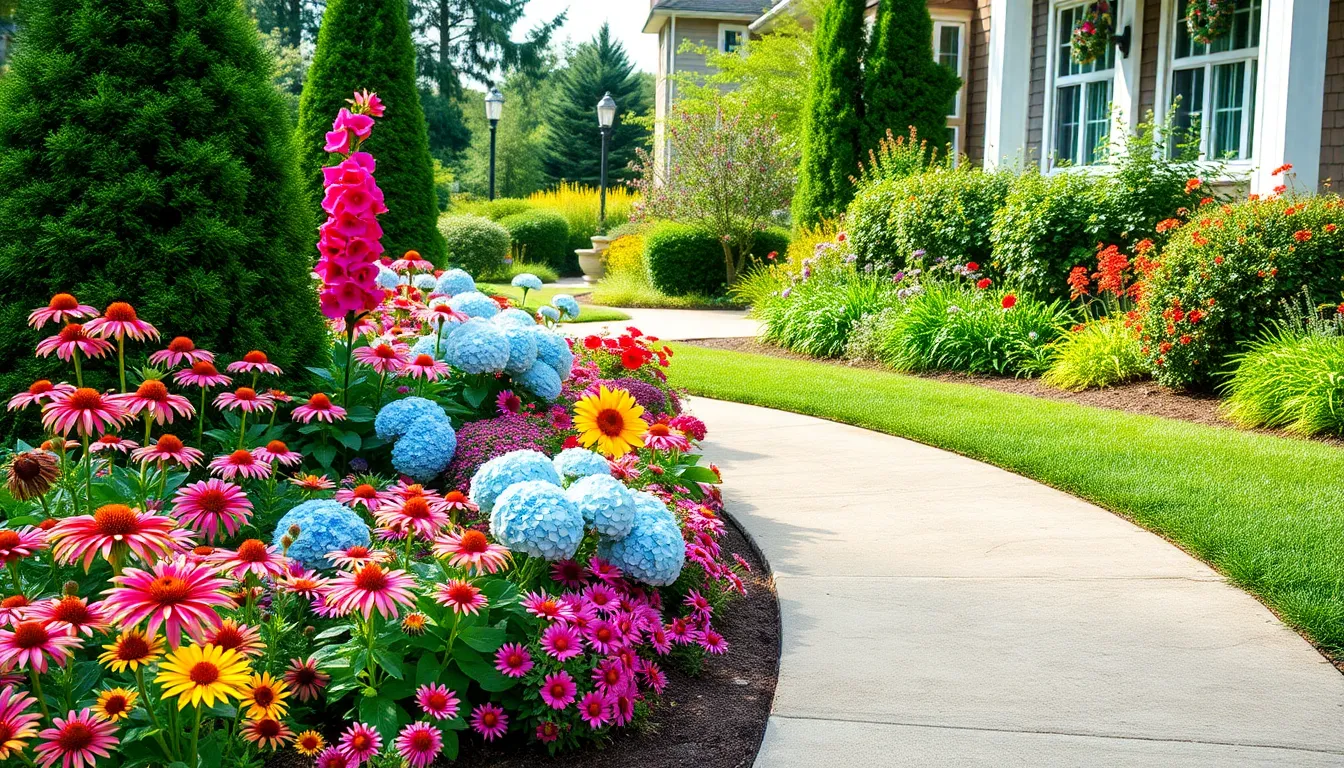
Creating a traditional perennial border along your walkway establishes an elegant foundation that provides year-round structure and seasonal beauty. We’ll show you how to design a stunning border that delivers continuous color and professional-looking results.
Select Long-Blooming Perennials for Maximum Impact
Coneflowers deliver exceptional value with their 8-10 week blooming period from midsummer through early fall. These hardy perennials attract butterflies while requiring minimal maintenance once established.
Hydrangeas provide stunning focal points with blooms lasting 4-6 months depending on the variety. We recommend choosing varieties like Endless Summer or Forever Pink for extended flowering periods.
Roses offer classic beauty with repeat blooming varieties producing flowers from late spring through the first frost. David Austin roses and Knock Out varieties perform exceptionally well in front yard borders.
Black-eyed Susans create bright yellow displays that bloom continuously for 10-12 weeks during peak summer months. Their cheerful flowers complement other perennials while tolerating various soil conditions.
Catmint produces lavender-blue spikes that bloom repeatedly throughout the growing season when deadheaded regularly. This low-maintenance perennial also provides aromatic foliage that deters pests naturally.
Layer Plants by Height for Visual Depth
Tall plants anchor the back row with specimens reaching 4-6 feet in mature height. Position hollyhocks, delphinium, or tall ornamental grasses against fences or house walls for dramatic vertical interest.
Medium height plants fill the middle section at 2-3 feet tall to create transitional layers. Plant peonies, salvia, or bee balm in this zone to bridge the height gap between tall and short varieties.
Short plants define the front edge with compact varieties staying under 18 inches tall. Edge your border with coral bells, lamb’s ear, or creeping phlox to create clean, defined lines.
Spacing considerations prevent overcrowding by following each plant’s mature width requirements. We calculate spacing by adding the mature widths of adjacent plants and dividing by two for optimal growing room.
Staggered planting creates natural flow by avoiding rigid straight lines within each height layer. Weave plants in gentle curves that guide the eye naturally along your walkway’s length.
Install Raised Flower Beds for Added Dimension and Drama
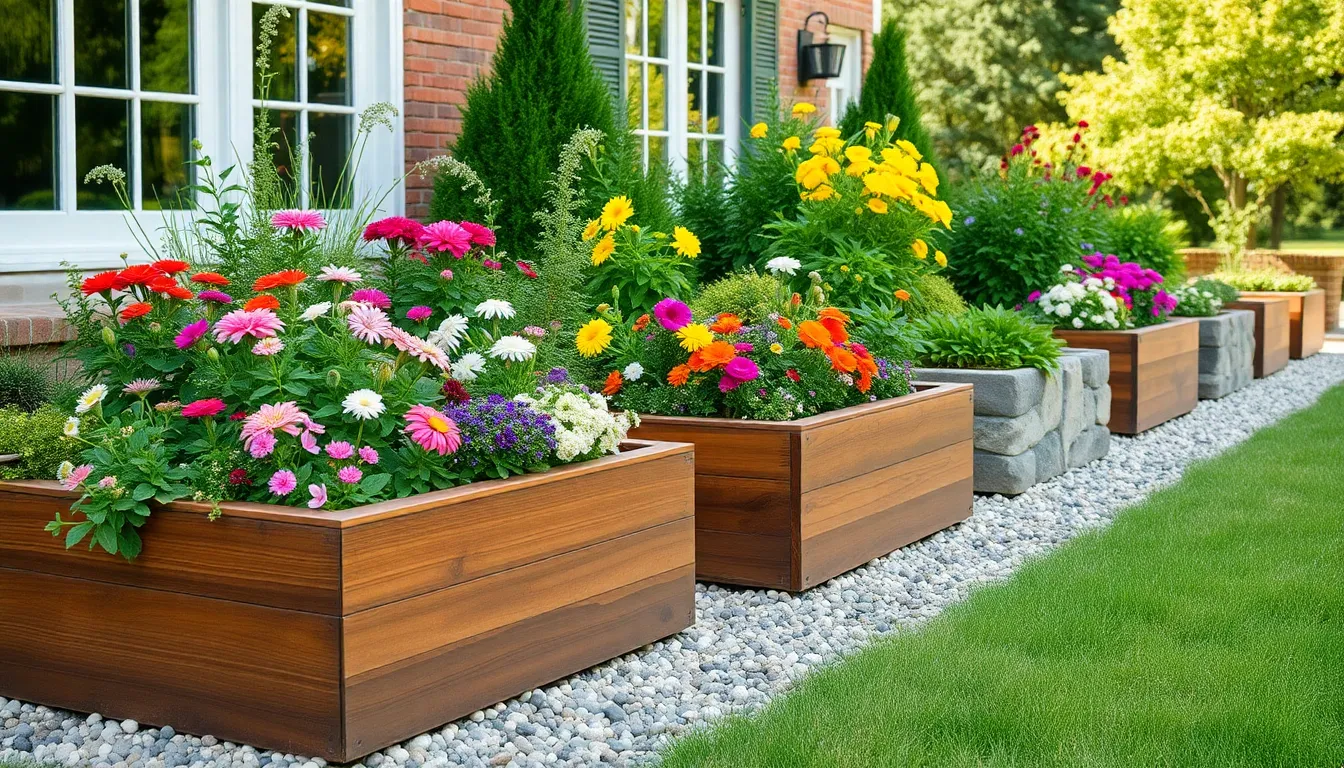
Raised flower beds transform flat front yards into ever-changing landscapes that catch the eye and add architectural interest. These elevated gardens create natural focal points while solving common planting challenges like poor soil drainage and difficult terrain.
Choose Materials That Complement Your Home’s Architecture
Wood remains the most popular choice for raised beds, offering versatility that suits both modern and traditional home styles. Cedar and redwood provide natural weather resistance, while composite materials deliver long-lasting durability without regular maintenance requirements.
Stone options create permanent installations that enhance property value significantly. Natural fieldstone works beautifully with rustic or farmhouse architecture, while cut limestone or granite blocks complement contemporary designs perfectly.
Metal raised beds offer sleek lines that suit modern homes exceptionally well. Cor-Ten steel develops an attractive rust patina that adds character over time, while powder-coated aluminum maintains its appearance for decades without deterioration.
Brick materials connect seamlessly with homes featuring similar masonry elements. We recommend matching mortar colors to existing structures for the most cohesive appearance that ties your garden design to your home’s foundation.
Incorporate Proper Drainage for Healthy Plant Growth
Drainage holes become essential components that prevent waterlogged soil and root rot problems. We suggest drilling quarter-inch holes every 6 to 8 inches along the bottom panels of wooden or composite raised beds.
Gravel layers provide foundational drainage that improves water flow beneath planted areas. Add 2 to 3 inches of coarse gravel or crushed stone before filling beds with quality potting soil for optimal growing conditions.
Industry fabric placement over gravel prevents soil from washing into drainage layers while allowing water passage. This barrier maintains proper soil levels and reduces maintenance requirements throughout growing seasons.
Soil composition directly impacts drainage success in raised garden installations. We recommend mixing one part compost with two parts quality topsoil for the ideal balance of nutrients and water-holding capacity that supports healthy plant growth.
Establish a Cottage Garden Style With Mixed Plantings
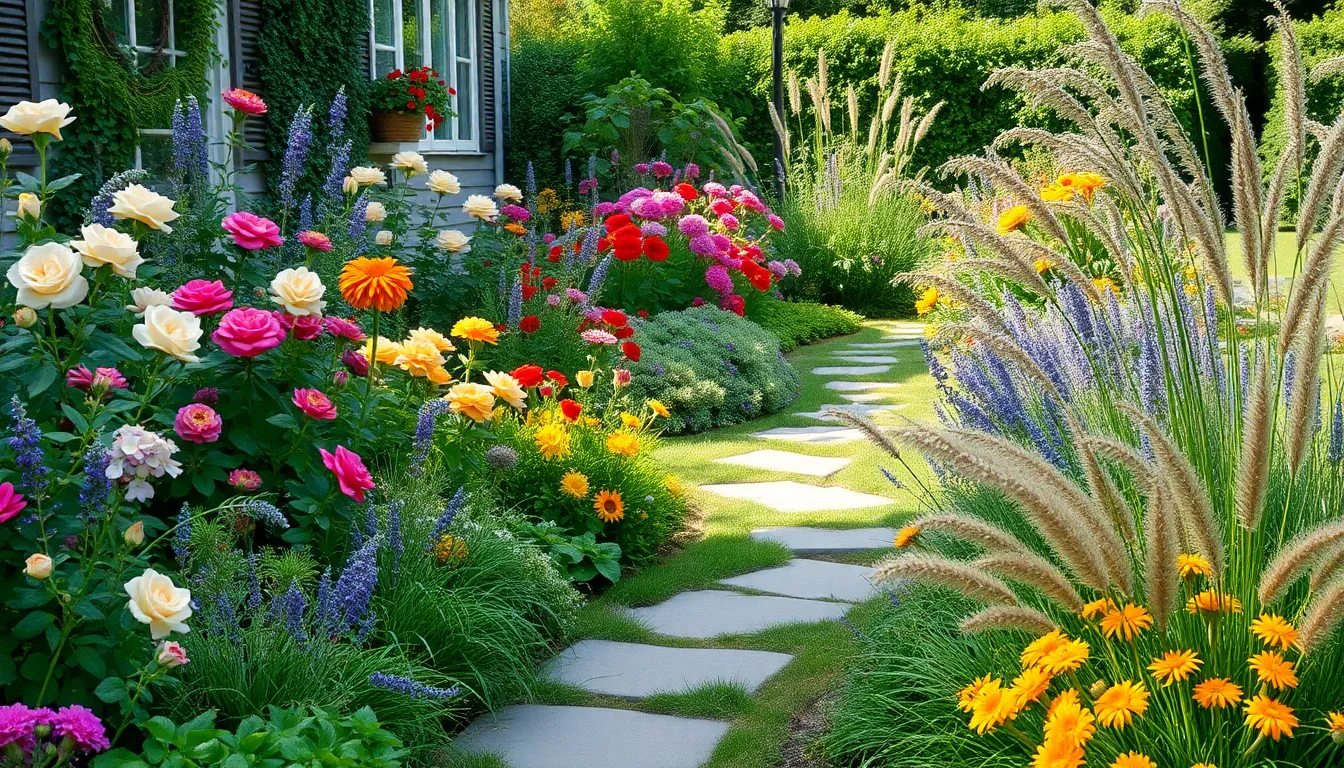
We’ll create an enchanting cottage garden that combines the best of traditional English design with modern practicality. Mixed plantings offer the perfect solution for achieving abundant blooms while maintaining a low maintenance approach to front yard gardening.
Combine Flowers, Herbs, and Ornamental Grasses
Flowers provide the backbone of our cottage garden design with lush blooms like roses, peonies, and hydrangeas creating classic romantic appeal. Layering these abundant bloomers throughout the seasons ensures continuous color from spring through fall. Annual varieties like zinnias and marigolds fill gaps between perennials for non-stop flowering.
Herbs add sensory depth to our mixed plantings while serving practical purposes in the kitchen. Fragrant lavender creates purple spikes that complement any flower combination, while rosemary offers year-round structure with needle-like foliage. Creeping thyme works exceptionally well as a water-efficient ground cover that releases aromatic oils when stepped on.
Ornamental grasses introduce movement and texture that softens the overall garden composition. Tall varieties like fountain grass create natural backdrop layers behind shorter flowering plants. Feathery seed heads catch morning light and add winter interest when perennial flowers go dormant.
Create Natural-Looking Curved Borders
Curved borders mimic nature’s organic growth patterns instead of rigid geometric lines that feel artificial. We’ll define garden beds with gentle sweeping curves that flow naturally around existing industry features like trees or mailboxes. These meandering edges create visual interest and make the garden appear larger than straight-edged designs.
Stepping stones or flagstone pathways guide visitors through our cottage garden while protecting plants from foot traffic. Materials like natural stone complement the informal cottage style better than concrete pavers. Spacing stones slightly apart allows ground-covering herbs like thyme to grow between them.
Layered plantings create the lush, full appearance that defines cottage gardens. Pittosporum tobira and other water-wise shrubs provide structure in the back rows, while medium-height flowers fill the middle space. Low-growing herbs and seasonal annuals spill over pathway edges for that quintessential cottage garden overflow effect.
Add Vertical Interest With Climbing Flowers and Trellises
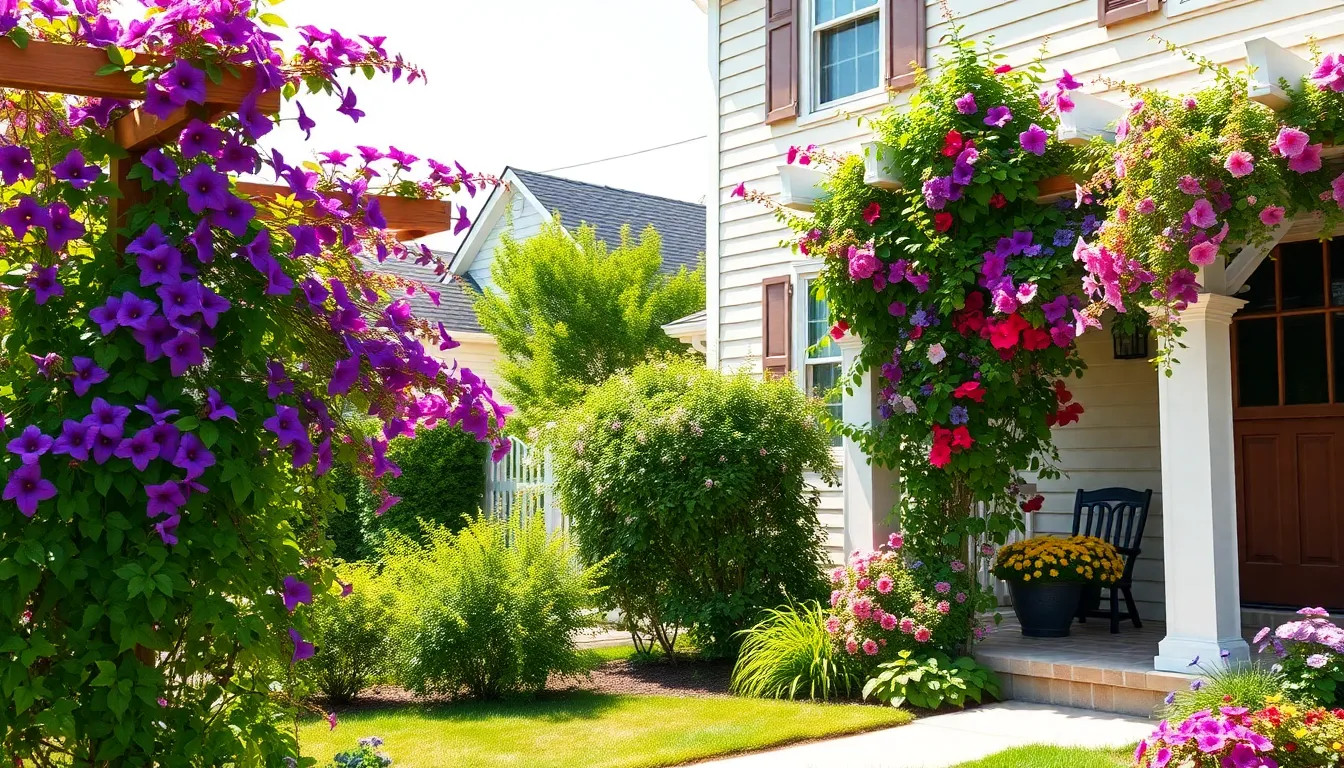
Transforming flat front yard spaces becomes effortless when we incorporate climbing flowers that draw the eye upward and create stunning focal points.
Select Fast-Growing Climbing Varieties
Clematis offers remarkable vertical coverage with its vigorous growth habit, reaching heights of 6-12 feet in a single growing season. We recommend planting clematis varieties like ‘Jackmanii’ or ‘Nelly Moser’ for reliable blooms and quick establishment.
Morning glories provide instant gratification for homeowners seeking immediate results, as these annual climbers can cover trellises completely within 8-10 weeks of planting. Their trumpet-shaped blooms in purple, blue, pink, and white create spectacular displays from summer through first frost.
Climbing roses deliver classic elegance while establishing permanent garden structure, with varieties like ‘Eden’ and ‘Don Juan’ producing continuous blooms throughout the growing season. These perennial climbers require 2-3 years to reach full maturity but provide decades of stunning vertical displays.
Bougainvillea creates tropical ambiance in warmer climates, producing vibrant papery bracts in magenta, purple, orange, and white that persist for months. We suggest choosing thornless varieties like ‘Barbara Karst’ for easier maintenance around walkways and entrances.
Position Structures for Maximum Curb Appeal
Frame your home’s entrance by placing trellises or arbors 6-8 feet from the front door to create an inviting pathway that guides visitors naturally toward your home. This strategic positioning enhances the welcoming atmosphere while showcasing your climbing flowers as a living entryway feature.
Enhance street views by installing pergolas or obelisks in prominent front yard locations where they’re visible from the curb, typically 10-15 feet from the street edge. We recommend positioning these structures to complement your home’s architectural lines rather than competing with them.
Maximize corner spaces by placing tall trellises or climbing structures in underutilized areas where property lines meet, creating privacy screens while adding vertical garden elements. These corner installations work particularly well with fence line gardens, providing backdrop support for layered flower bed designs.
Consider sun exposure patterns when positioning climbing structures, ensuring morning sun access for optimal flower production while providing afternoon shade protection in hot climates. We suggest observing your yard’s light patterns for a full day before finalizing trellis placement to guarantee healthy plant growth.
Incorporate Native Wildflowers for Low-Maintenance Beauty
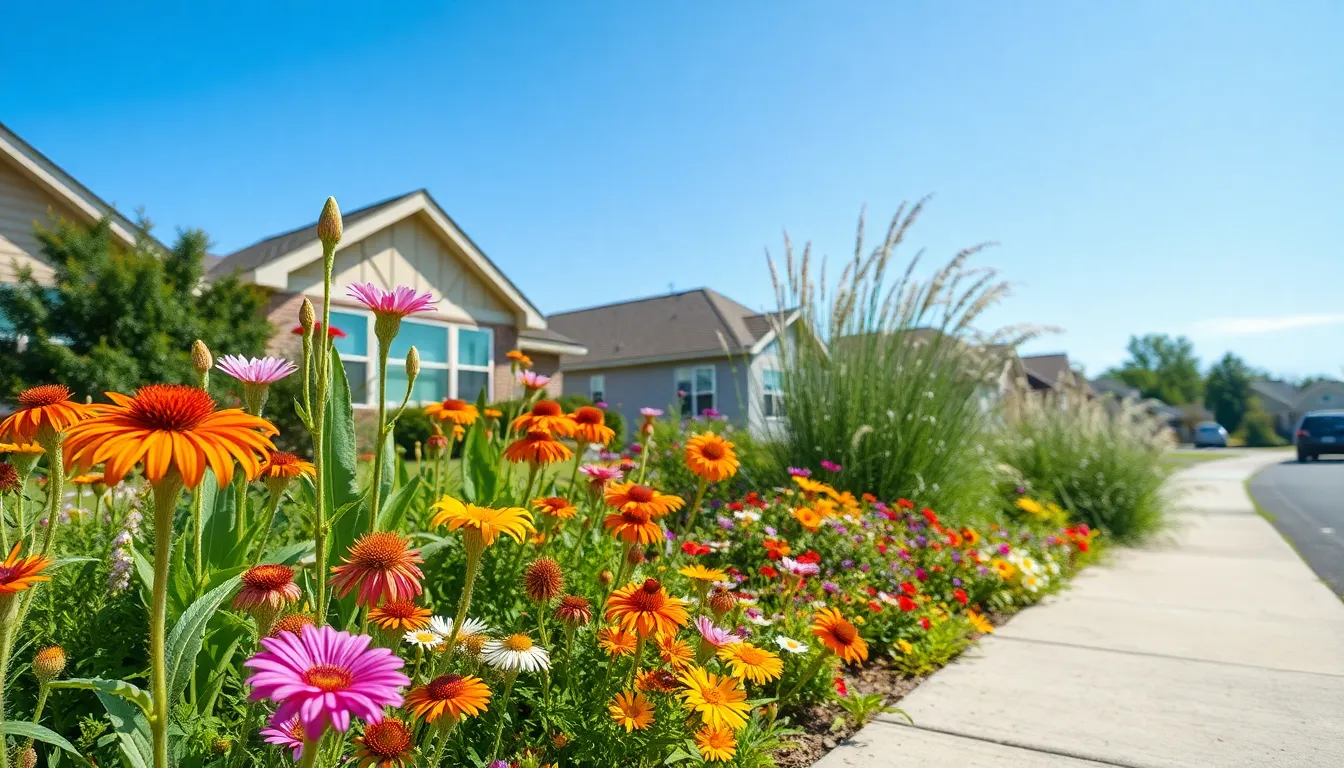
Native wildflowers offer the perfect solution for creating stunning front yard displays that require minimal upkeep while supporting local ecosystems.
Choose Regional Native Species for Best Results
Selecting plants adapted to your local climate ensures success with minimal intervention. Native wildflowers naturally thrive in local wind patterns, rainfall amounts, and temperature fluctuations without extensive soil amendments or frequent watering schedules.
Consider big bluestem grass and common milkweed for expansive naturalistic meadow plantings. These species create dramatic height and movement while providing essential habitat for monarch butterflies and other beneficial insects.
Opt for butterfly milkweed and prairie dropseed in more structured garden beds. Their compact growth habits maintain neat appearances while delivering vibrant orange blooms and fine textured foliage that complements traditional landscaping elements.
Research your exact hardiness zone to identify the most suitable native options. Local extension services and native plant societies provide region exact recommendations that account for soil types, moisture levels, and seasonal growing patterns.
Design Naturalized Areas That Attract Pollinators
Position taller wildflower species along fence lines or sidewalk borders to create natural screens. This placement strategy adds vertical interest while establishing clear property boundaries with colorful seasonal displays that change throughout the growing season.
Plant lower growing varieties along garden pathways to maintain accessibility. Compact native species provide continuous blooms without overwhelming walkways or blocking views to your front entrance.
Layer wildflowers behind existing flower beds to add depth and extended color periods. This approach creates seamless transitions between formal plantings and naturalized areas while maximizing available growing space.
Incorporate container plantings on terraces or deck areas for small space answers. Planters filled with native wildflowers bring pollinator friendly plants closer to outdoor living areas while adding moveable color accents.
Plan yellow flowering species to attract bees and red blooms for hummingbird visits. This strategic color selection creates a diverse pollinator habitat that supports various beneficial species throughout the growing season while providing ever-changing visual interest for your front yard display.
Create Focal Points With Statement Flower Containers
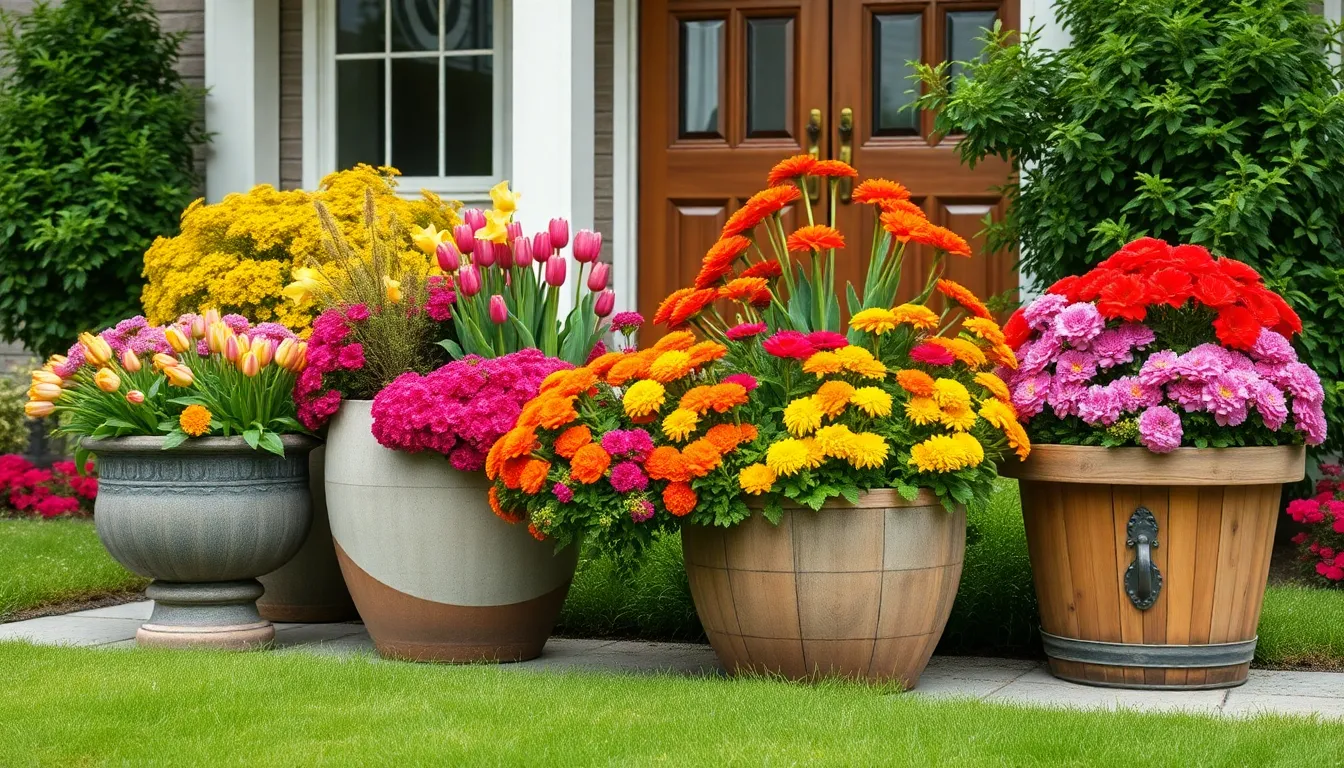
Statement flower containers serve as powerful design elements that instantly transform your front yard’s visual appeal. These impressive planters create dramatic focal points that guide visitors’ eyes toward key areas of your outdoor space.
Select Large Planters for Maximum Visual Impact
Large planters make the strongest visual statement when positioned strategically throughout your front yard industry. We recommend choosing containers that measure at least 18-24 inches in diameter to create substantial presence without overwhelming smaller spaces.
Material selection plays a crucial role in achieving your desired aesthetic:
- Wood planters complement rustic and traditional home styles while providing excellent insulation for plant roots
- Ceramic containers offer elegant sophistication and work beautifully with modern architectural designs
- Stone planters deliver timeless appeal and exceptional durability for long-term garden investments
- Metal containers provide contemporary flair and lightweight portability for seasonal repositioning
Strategic placement maximizes your containers’ impact on curb appeal. Position your largest planters at entryways to create welcoming focal points that frame your home’s entrance. Line pathways with medium-sized containers to establish visual rhythm and guide visitors toward your front door.
Height variation adds dimensional interest to your container displays. Mix tall planters with shorter ones to create layered compositions that draw attention from multiple viewing angles.
Design Seasonal Container Arrangements
Seasonal arrangements keep your front yard looking fresh and vibrant throughout the year while showcasing your gardening creativity. We suggest planning four distinct seasonal displays to maintain continuous visual interest.
Spring arrangements should feature early-blooming flowers like pansies, primrose, and tulip bulbs paired with fresh green foliage. These combinations provide cheerful color after winter’s dormant period.
Summer displays benefit from heat-tolerant annuals such as marigolds, petunias, and impatiens that bloom continuously through hot weather. Add trailing varieties like sweet potato vine to create cascading effects over container edges.
Fall containers showcase seasonal beauty with chrysanthemums, ornamental kale, and decorative gourds that celebrate autumn’s rich color palette. Include evergreen elements like small conifers to bridge the transition into winter.
Winter arrangements maintain structure using evergreen plants, holly branches, and seasonal accents like ribbons or battery-operated lights for holiday appeal.
Update your arrangements every 3-4 months to align with seasonal changes and keep your displays looking professionally maintained. This regular refresh schedule ensures optimal plant health and sustained visual impact throughout the growing season.
Design a Symmetrical Formal Garden Layout
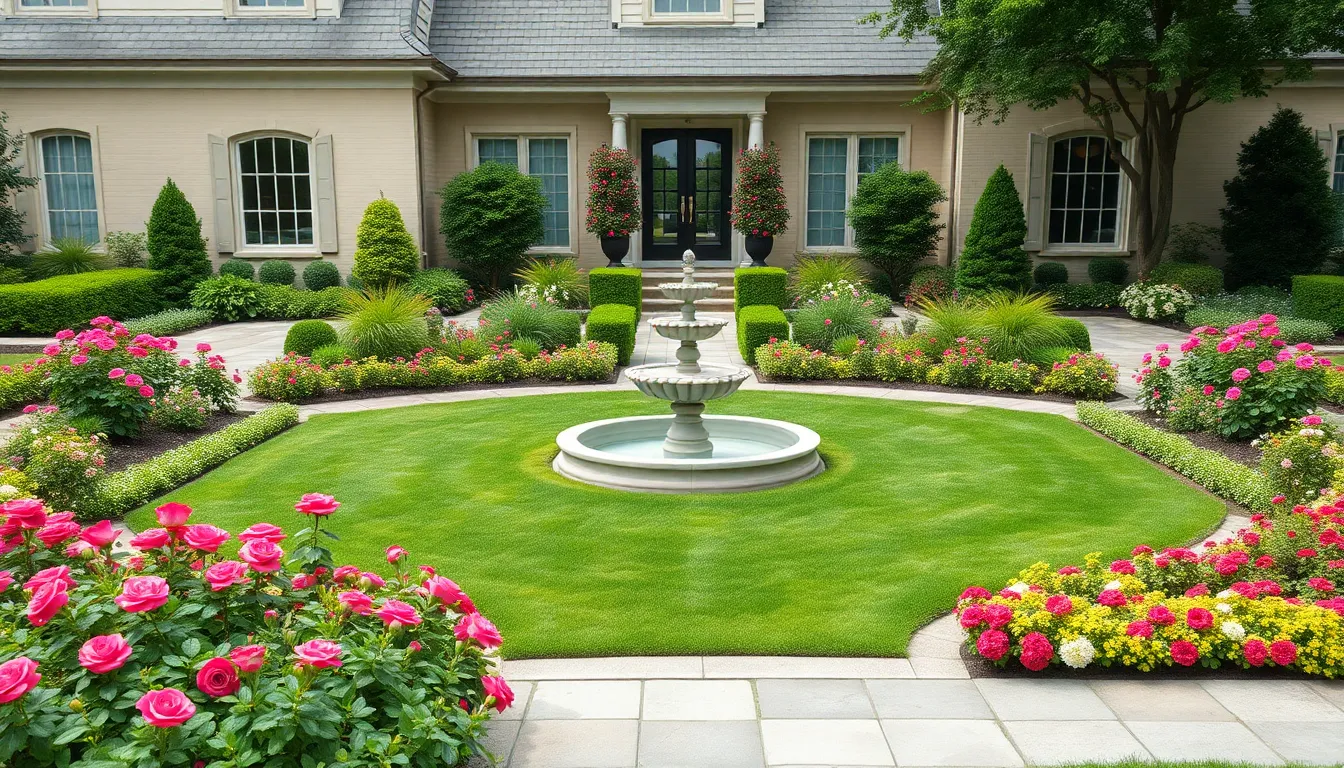
Creating a formal garden layout elevates your front yard’s sophistication while providing year-round structure. This timeless approach transforms your entrance into an elegant showcase that commands attention.
Use Geometric Patterns and Structured Plantings
Geometric patterns form the foundation of successful formal garden designs. Circles, squares, and rectangles create organized visual flow that guides visitors toward your home’s entrance. We recommend starting with a central geometric shape like a circular flower bed surrounded by rectangular planting areas.
Structured plantings maintain visual interest through carefully planned height variations. Layer tall plants like roses or hydrangeas in the back, medium height perennials such as coneflowers in the middle, and low growing plants like begonias along the front edges. This approach creates depth while preserving the formal structure.
Mixing plants with varying textures keeps the symmetrical design from appearing monotonous. Combine smooth leafed hostas with feathery ornamental grasses, or pair broad leafed shrubs with fine textured lavender. These texture contrasts add sophistication without disrupting the organized appearance.
Maintain Balance With Matching Plant Groupings
Central axis establishment serves as your garden’s backbone around which all symmetry revolves. Position a fountain, statue, or central pathway to create this focal point, then mirror all plantings on either side. This technique ensures perfect balance that draws the eye naturally through your garden space.
Mirrored elements require identical flower beds, hedges, and trees on opposite sides of your central axis. Plant three purple coneflowers on the left side, then repeat this exact grouping on the right side. This precision creates the formal symmetry that defines elegant garden design.
Color scheme consistency maintains cohesive visual flow throughout your symmetrical layout. Light colored flowers like white petunias or pale pink impatiens create dramatic contrast against dark green hedge backgrounds. Stick to your chosen palette across all mirrored sections for professional results.
Regular maintenance preserves the balanced appearance that formal gardens demand. Prune matching shrubs to identical shapes and heights every few weeks during growing season. Replace seasonal flowers simultaneously on both sides to ensure continuous symmetry throughout the year.
Establish Ground Cover Flowers for Large Area Coverage
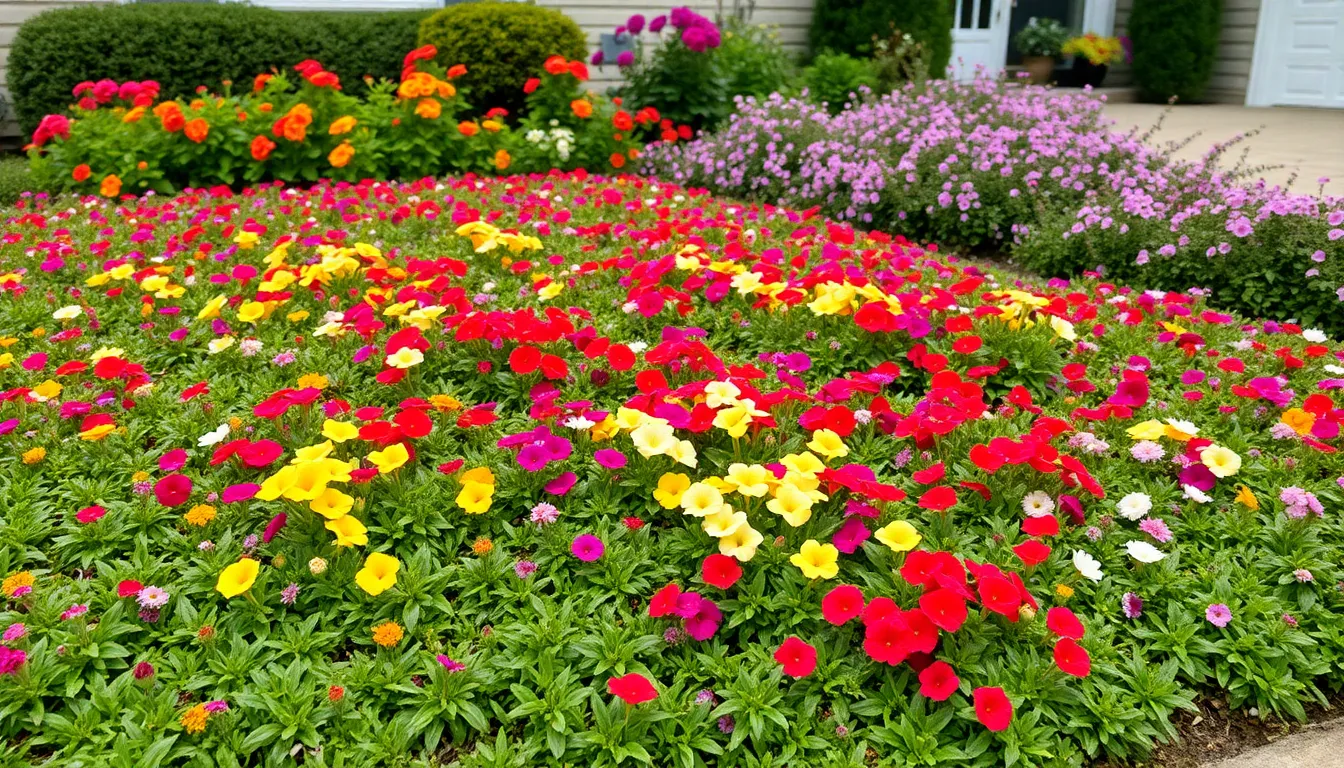
Ground cover flowers transform large front yard spaces into cohesive displays while requiring minimal maintenance once established. We’ll explore the most effective spreading varieties and natural weed suppression options to create stunning coverage.
Choose Spreading Varieties for Quick Coverage
Creeping Thyme spreads rapidly across bare soil while acting as a natural weed suppressor. This low maintenance option fills gaps quickly and maintains a uniform appearance throughout the growing season. We recommend planting creeping thyme in areas where traditional grass struggles to grow.
Petunias cover large areas with vibrant colors and spread quickly once planted. These versatile flowers adapt well to ground applications even though their popularity in hanging baskets and containers. Their rapid growth makes them ideal for filling substantial spaces in a single growing season.
Creeping Jenny (Lysimachia nummularia ‘Aurea’) provides fast spreading coverage with bright golden foliage. This hardy plant adds a sunny appearance to garden spaces while quickly establishing dense coverage. We’ve found it particularly effective in areas that need immediate visual impact.
Phlox subulata (Creeping Phlox) blooms beautifully in early spring and spreads to cover large areas naturally. Its dense foliage structure helps suppress weeds while providing seasonal color displays. This perennial option returns year after year with expanding coverage.
Select Options That Suppress Weeds Naturally
Vinca minor (Periwinkle) excels at suppressing weeds by forming dense mats that prevent unwanted growth. Known for its rapid spreading ability, this ground cover creates excellent large area coverage. We recommend vinca minor for slopes and areas where traditional maintenance proves challenging.
Creeping Juniper naturally suppresses weeds through its dense mat formation and provides year round coverage. This evergreen option works exceptionally well in areas requiring consistent appearance throughout all seasons. Its hardy nature makes it perfect for low maintenance front yard designs.
Creeping Sedum features succulent leaves that spread quickly while suppressing weeds through dense growth patterns. This drought tolerant option requires minimal watering once established and thrives in various soil conditions. We’ve observed excellent results in areas with poor soil quality or limited irrigation access.
Plan a Fragrant Flower Garden Near Your Front Door
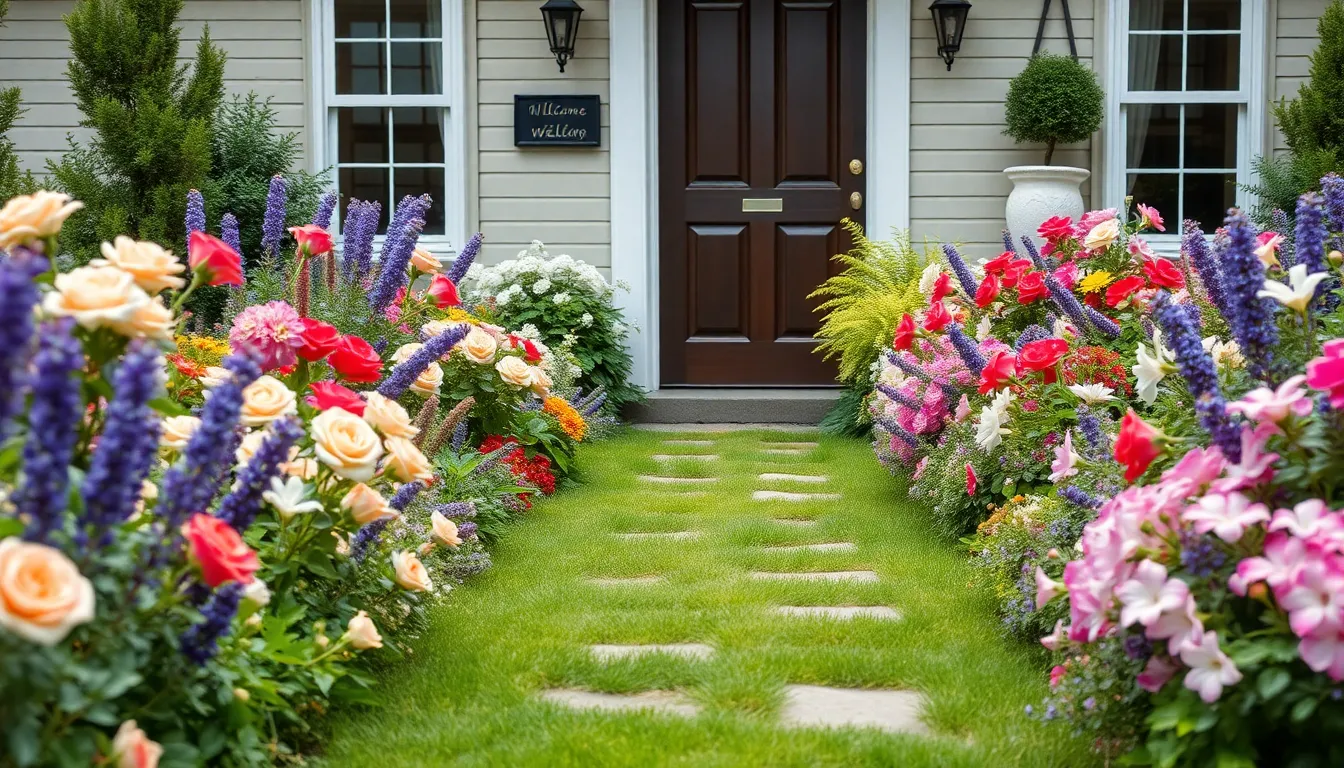
Transform your entryway into a sensory haven that welcomes guests with delightful scents. Aromatic flowers create an immediate positive impression while adding therapeutic benefits to your daily routine.
Choose Aromatic Flowers for Sensory Appeal
Roses deliver classic elegance with their timeless fragrance that intensifies during morning and evening hours. These beloved blooms offer varieties ranging from subtle tea roses to intensely scented garden roses that perfume entire front yards.
Lavender provides dual benefits with its calming scent and drought resistant nature that thrives in most climates. We recommend English lavender for cooler regions and French lavender for warmer areas to ensure optimal fragrance production.
Jasmine creates an intoxicating evening perfume that attracts beneficial pollinators while offering year round greenery. Star jasmine works exceptionally well for front door plantings because it maintains compact growth while producing abundant white flowers.
Gardenias offer creamy white blooms with an intensely sweet fragrance that carries well in humid conditions. These evergreen shrubs provide structure to your fragrant garden while delivering peak scent during summer months.
Sweet alyssum carpets areas with tiny flowers that release honey like fragrances throughout the growing season. This low growing annual works perfectly as border edging while providing continuous blooms from spring until frost.
Position Fragrant Plants Along High Traffic Areas
Entryway borders maximize scent impact by concentrating aromatic plants where people naturally pause and linger. We suggest creating fragrant clusters within 3 to 5 feet of walkways to ensure guests experience the full sensory effect.
Window boxes beneath front facing windows allow fragrant breezes to drift indoors while creating visual appeal from both inside and outside perspectives. Position these containers at heights between 2 to 4 feet for optimal scent distribution.
Walkway edges benefit from low growing fragrant plants that release scent when brushed against during daily foot traffic. Creeping thyme and sweet alyssum work exceptionally well for this purpose because they tolerate occasional stepping.
Seating areas around front porches or patios deserve concentrated fragrant plantings that enhance relaxation and conversation spaces. We recommend placing larger fragrant shrubs like roses or gardenias within 6 to 8 feet of seating to create aromatic outdoor rooms.
Mailbox surroundings offer daily opportunities for fragrant encounters that brighten routine tasks while creating neighborhood focal points. Plant compact fragrant perennials like lavender or catmint around mailbox bases for year round appeal.
Conclusion
Creating the perfect front yard flower garden doesn’t have to be overwhelming when you break it down into manageable elements. We’ve shown you how each design approach serves a unique purpose – from low-maintenance perennials that provide lasting structure to fragrant blooms that create memorable first impressions.
The key to success lies in choosing elements that align with your lifestyle and home’s architecture. Whether you’re drawn to cottage garden charm or prefer clean geometric lines your front yard can reflect your personal style while boosting curb appeal.
Remember that great gardens evolve over time. Start with one or two ideas that excite you most then gradually expand your design. With proper planning and the right plant selections you’ll create an outdoor space that welcomes guests and brings you joy every time you come home.
Frequently Asked Questions
What are the best low-maintenance flowers for front yard gardens?
Perennials like coneflowers, black-eyed Susans, and catmint are excellent low-maintenance choices. These flowers return year after year, require minimal care once established, and provide continuous blooms throughout the growing season. For ground cover, consider creeping thyme or sedum, which spread naturally and suppress weeds while adding color.
How can I create year-round appeal in my flower garden?
Plan seasonal rotations using spring bulbs, summer annuals, and fall chrysanthemums. Incorporate evergreen elements and perennials with interesting winter structure. Use container plantings that can be updated quarterly, and include plants with different bloom times to ensure continuous color throughout the seasons.
What flowers work best for shaded front yard areas?
Impatiens, begonias, and coleus thrive in partial to full shade conditions. These flowers provide vibrant colors and continuous blooms without requiring direct sunlight. Hostas and ferns can also add texture and greenery to shaded areas while requiring minimal maintenance.
How do I choose the right container size for flower displays?
Select large planters (at least 18-24 inches in diameter) for maximum visual impact. Larger containers hold more soil, retain moisture better, and provide adequate root space for healthy plant growth. Consider your home’s scale – bigger containers work better for larger properties and architectural features.
What are the benefits of using native wildflowers in front yard gardens?
Native wildflowers require less water, fertilizer, and maintenance since they’re adapted to local conditions. They support local ecosystems by attracting native pollinators and birds. Additionally, they’re naturally resistant to local pests and diseases, making them cost-effective and environmentally friendly landscaping choices.
How can I add height and dimension to a flat front yard?
Install raised flower beds using materials like wood, stone, or brick to create elevation changes. Add vertical elements such as trellises, arbors, or climbing flowers like clematis and morning glories. Use layered plantings with tall plants in back, medium-height in middle, and short plants in front.
What’s the best way to plan a cottage garden style front yard?
Combine flowers, herbs, and ornamental grasses in mixed plantings for abundant blooms. Use curved borders instead of straight lines for a natural look. Layer plants like roses, peonies, and hydrangeas for continuous color, and include fragrant herbs like lavender and rosemary for sensory appeal.
How often should I update my container flower arrangements?
Update container arrangements every 3-4 months or seasonally to maintain optimal plant health and visual appeal. Replace spent flowers with fresh seasonal varieties, refresh soil as needed, and adjust watering schedules based on plant requirements and weather conditions for best results.

